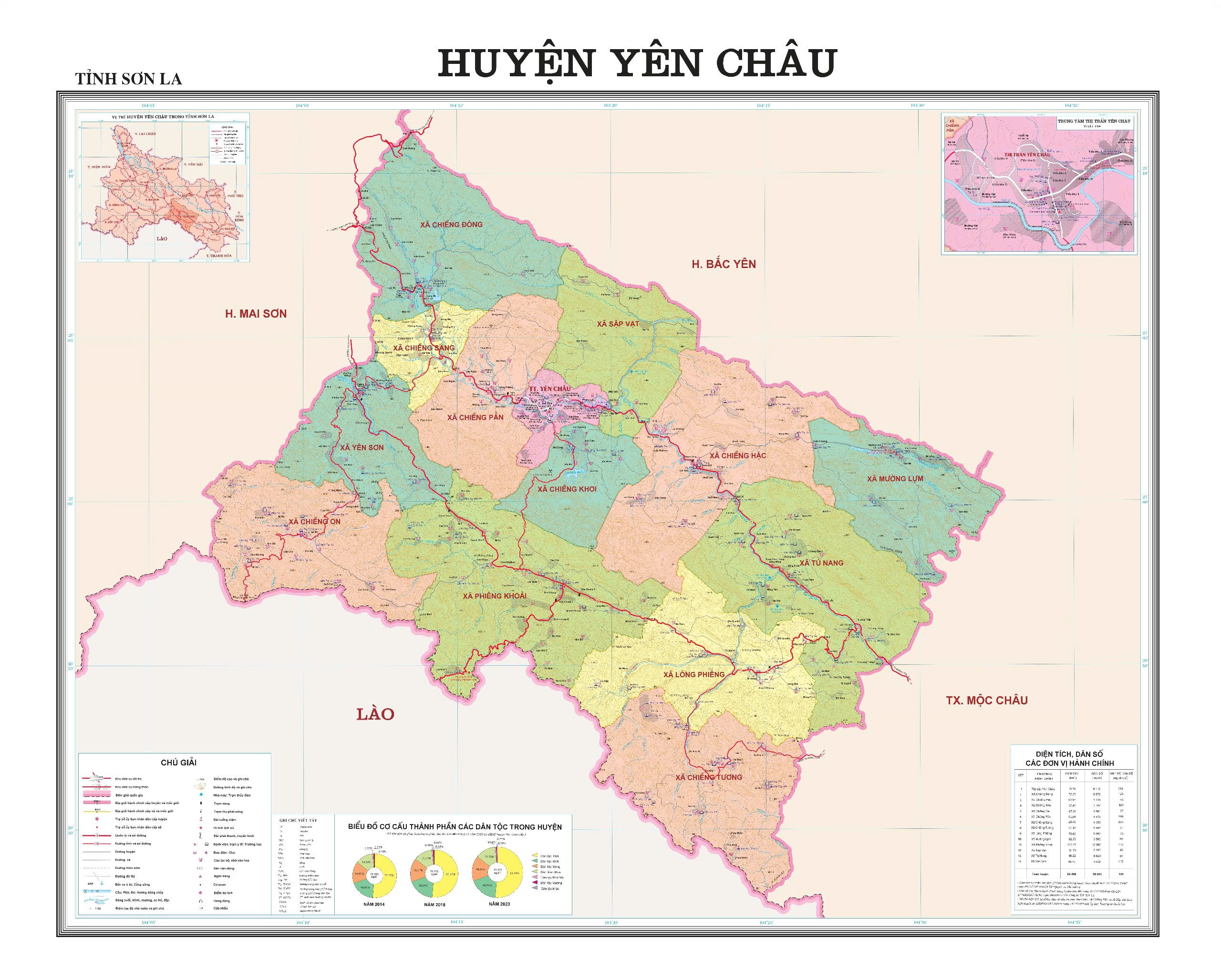
Map of former Yen Chau District
Yen Chau Commune was established under Resolution No. 1681/NQ-UBTVQH15 dated June 16, 2025, by the Standing Committee of the National Assembly on the reorganization of administrative units at the commune level in Son La Province. This newly formed administrative unit was created by merging the entire natural area and population of Yen Chau Town and the communes of Chieng Pan, Chieng Sang, Chieng Dong, Chieng Khoi, and Sap Vat into a new commune named Yen Chau. Upon its establishment, the commune had a natural area of 246.55 square kilometers, comprising 57 hamlets and residential quarters, with a population of 32,406 people.
The naming of the new administrative unit as Yen Chau Commune reflects the recognition and respect for the glorious achievements the district has made over nearly 80 years. This is a decision of deep political and historical significance, contributing to the education of traditional values while also reflecting the spirit of inheritance and the promotion of revolutionary historical values, inspiring a desire for innovation and development of the homeland.
The commune lies along National Highway 6, approximately 240 km northwest of Hanoi and 64 km east of Son La City. It serves as a transitional area between the Na San and Moc Chau plateaus and is geographically located between longitudes 104°10’ – 104°40’ E and latitudes 21°07’ – 21°14’ N. Yen Chau Commune occupies a central location (of the former district), bordering Yen Son and Co Noi communes to the west; Ta Khoa commune to the north; Chieng Sai and Chieng Hac communes to the east; and Phieng Khoai commune to the south. The terrain is mainly hilly and mountainous, divided by a series of hills, with an average elevation of 400 meters above sea level. The topography and climate are suitable for the development of fruit trees, food crops, livestock, poultry farming, and afforestation.
Regarding population: The commune has a relatively large population compared to the other four communes of the district after the reorganization (32,406 people), consisting of four main ethnic groups: Thai, Kinh, Mong, and Kho Mu.
Historical, Cultural, and Educational Characteristics: Yen Chau Commune is a land with a long-standing history of ancient settlement. As early as the first millennium, Yen Chau was part of the Muong Vat region. During the reign of King Le Thanh Tong, in the 10th year of Quang Thuan (1469), the area was renamed Viet Chau, one of five chau (district-level units) under Gia Hung prefecture. In the third year of Minh Mang’s reign (1822), Viet Chau was renamed Yen Chau. Though its name has changed many times throughout history, all of them refer to the same place — Yen Chau, a land that has long been inseparable from the Northwestern region of Vietnam, a mountainous and sacred part of the nation's territory.
Within the commune, there are three provincially recognized historical sites linked to the nation’s struggle for independence and defense:
-
Yen Chau Iron Bridge Historical Site
-
Victory Monument of Chieng Dong
-
Historical Site where President Ho Chi Minh addressed the people of Yen Chau District
In addition, the commune is home to Chiêng Khoi Lake, a national scenic site. These cultural and historical landmarks are preserved and promoted by local ethnic communities, contributing to the enrichment of their cultural and spiritual heritage.
In terms of culture, the commune is a convergence and intersection of diverse ethnic cultures, including Thai, Kinh, Mong, and Kho Mu, creating a rich and distinctive spiritual life. The cultural infrastructure is comprehensively developed; cultural, artistic, and sports activities thrive, helping to build a healthy and civilized living environment.
In education, the commune hosts a wide range of educational institutions from preschool to high school levels. Many schools meet national standards, and the quality of education has seen positive changes. The intellectual level of the population is gradually improving, and the movements promoting learning and talent development are increasingly prioritized and invested in.